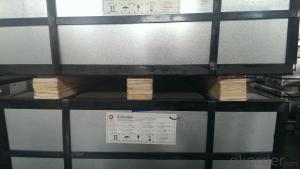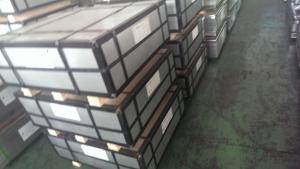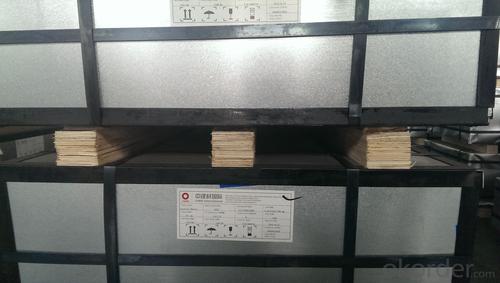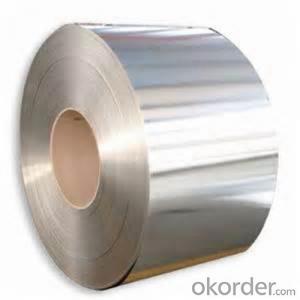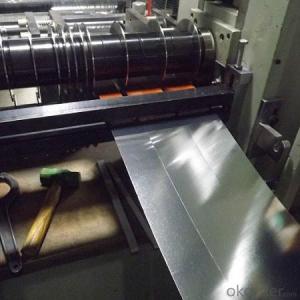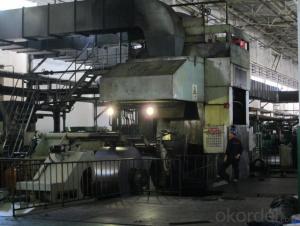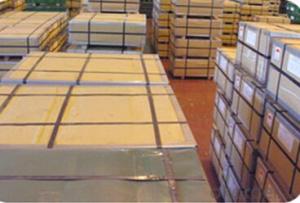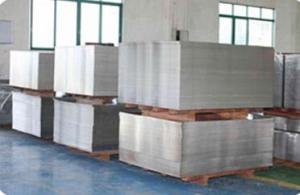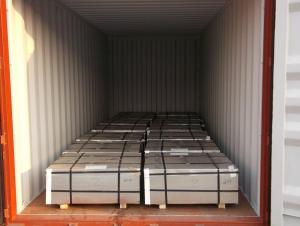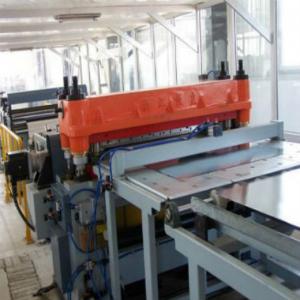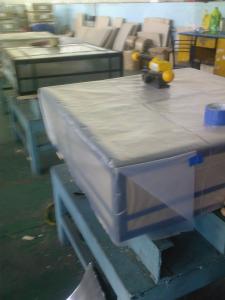Prime Quality Tinplate and TFS for Tin Cans
- Loading Port:
- Shanghai
- Payment Terms:
- TT OR LC
- Min Order Qty:
- 25 m.t.
- Supply Capability:
- 25000 m.t./month
OKorder Service Pledge
OKorder Financial Service
You Might Also Like
Specification
1.Structure of Prime Quality Tinplate and TFS for Tin Cans Description
Also known as chromed steel, tin-free steel (TFS) is obtained by coating the metal base (low-carbon steel) with an ultra-thin layer of metallic chrome and then with a chromium oxide layer.
2.Main Features of the Prime Quality Tinplate and TFS for Tin Cans
Appearance – Tinplate is characterized by its beautiful metallic luster. Products with various kinds of surface roughness are produced by selecting the surface finish of the substrate steel sheet.
Paintability and printability – Tinplates have excellent paintability and printability. Printing is beautifully finished using various lacquers and inks.
Formability and strength – Tinplates have got very good formability and strength. By selecting a proper temper grade, appropriate formability is obtained for different applications as well as the required strength after forming.
Corrosion resistance – Tinplate has got good corrosion resistance. By selecting a proper coating weight, appropriate corrosion resistance is obtained against container contents. Coated items should meet 24 hour 5 % salt spray requirement.
3.Prime Quality Tinplate and TFS for Tin Cans Images
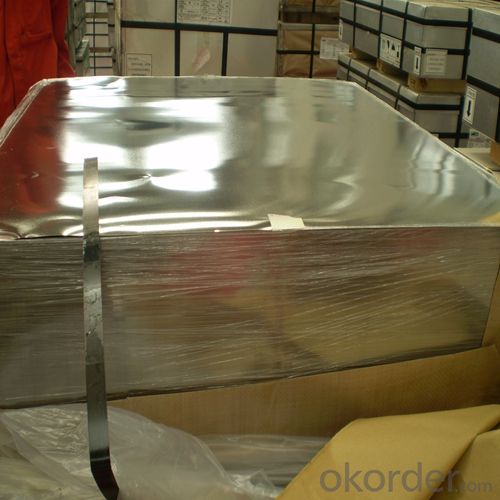

4.Prime Quality Tinplate and TFS for Tin Cans Specification
Specification of :
Standard: ISO 11949 -1995, GB/T2520-2000,JIS G3303,ASTM A623, BS EN 10202
Material: MR,SPCC
Thickness:0.15mm - 0.50mm
Width: 600mm -1150mm
Temper: T1-T5
Annealing: BA & CA
Coil Inner Diameter: 508mm
Weight: 6-10 tons/coil 1~1.7 tons/sheets bundle
Passivation:311
Oil: DOS
Surface: Finish,bright,stone,matte,silver
5.FAQ of Prime Quality Tinplate and TFS for Tin Cans
- What is tinning and how does it work?
Tinning is the process of thinly coating sheets of wrought iron or steel with tin, and the resulting product is known as tinplate. It is most often used to prevent rust.
- Do you only have prime quality tinplate?
We can supply both prime and second quality tinplate.
- Q: How is tinplate coated with polymer films?
- Tinplate is coated with polymer films through a process called lamination. The tinplate is first cleaned to remove any impurities and then coated with a layer of adhesive. A thin layer of polymer film is then applied onto the adhesive-coated tinplate. The film is typically thermally bonded to the tinplate through a heating process or through the use of adhesion-promoting agents. This coating provides a protective and decorative layer to the tinplate, enhancing its durability and preventing corrosion.
- Q: What are the regulations regarding tinplate packaging?
- Tinplate packaging is subject to various regulations, depending on the country and specific product being packaged. These regulations typically cover aspects such as food safety, labeling requirements, and environmental considerations. For example, in the United States, the Food and Drug Administration (FDA) regulates tinplate packaging for food products, ensuring they meet safety standards and are properly labeled. Additionally, there may be specific regulations related to recycling or disposal of tinplate packaging to minimize its impact on the environment. It is essential for businesses to research and comply with the relevant regulations to ensure their tinplate packaging meets all necessary requirements.
- Q: How does tinplate contribute to the functionality of household goods?
- Tinplate contributes to the functionality of household goods by providing a durable and corrosion-resistant coating that protects the underlying material from moisture, oxygen, and other environmental factors. This ensures that household items such as cans, containers, and appliances have a longer lifespan and remain in good condition. Additionally, tinplate's versatility allows for easy shaping and forming, enabling the creation of various functional and aesthetically pleasing designs for household goods.
- Q: How is tinplate used in the manufacturing of electrical components?
- Tinplate is commonly used in the manufacturing of electrical components due to its corrosion resistance and excellent electrical conductivity. It is often formed into thin sheets and utilized as a protective coating on copper or other metal surfaces to prevent oxidation and ensure prolonged durability. Additionally, tinplate can be shaped into intricate forms, such as cans or enclosures, to house electrical circuits and provide insulation. Overall, tinplate plays a crucial role in safeguarding the functionality and longevity of electrical components.
- Q: How does tinplate perform in terms of stackability?
- Tinplate performs well in terms of stackability due to its rigid and durable nature. Its flat surface and uniform thickness allow for easy stacking and stability, making it suitable for various storage and transportation applications.
- Q: Can tinplate be reused after recycling?
- Yes, tinplate can be reused after recycling.
- Q: What are the main competitors of tinplate in the packaging industry?
- The main competitors of tinplate in the packaging industry are aluminum, glass, and various types of plastics such as polyethylene terephthalate (PET), high-density polyethylene (HDPE), and polypropylene (PP).
- Q: What is the process for printing on tinplate?
- The process for printing on tinplate involves several steps. First, the tinplate is cleaned and coated with a thin layer of primer to ensure proper adhesion of the ink. Then, the design or artwork is engraved onto a printing plate, typically made of a flexible material like rubber or plastic. This plate is then loaded onto a printing press. The tinplate is fed into the press, and the printing plate transfers the ink onto the tinplate in the desired design. The tinplate is then dried or cured to set the ink. Finally, the printed tinplate can be further processed or converted into various products like cans or packaging materials.
- Q: What are the common testing methods for tinplate?
- Some common testing methods for tinplate include visual inspection, thickness measurement, adhesion testing, corrosion resistance testing, and tensile strength testing.
- Q: Tinplate why have white and yellow, tin plating should be white ah, yellow is how to return a responsibility?
- Tinplate itself is no color, it is iron color.
Send your message to us
Prime Quality Tinplate and TFS for Tin Cans
- Loading Port:
- Shanghai
- Payment Terms:
- TT OR LC
- Min Order Qty:
- 25 m.t.
- Supply Capability:
- 25000 m.t./month
OKorder Service Pledge
OKorder Financial Service
Similar products
Hot products
Hot Searches
Related keywords
